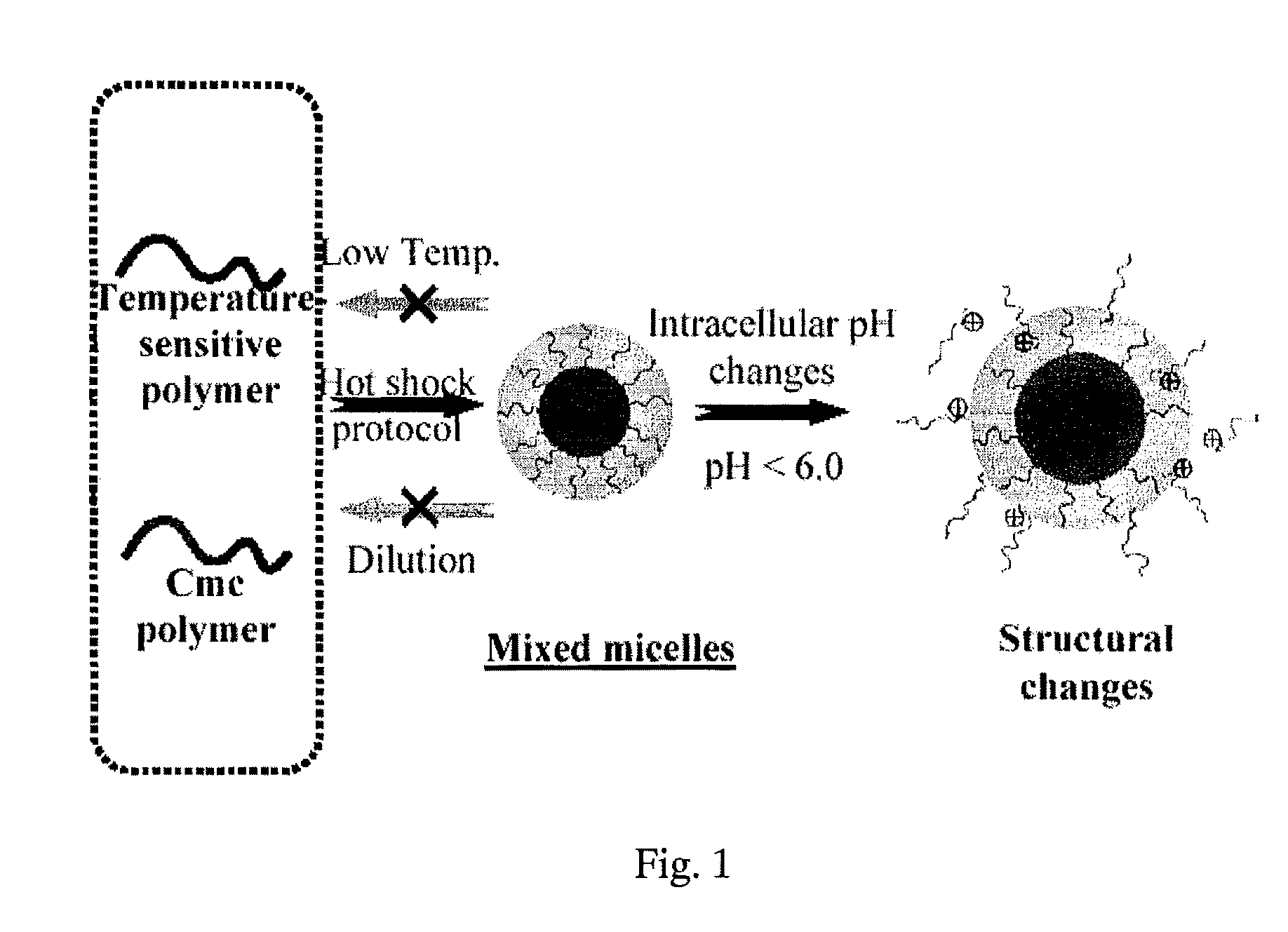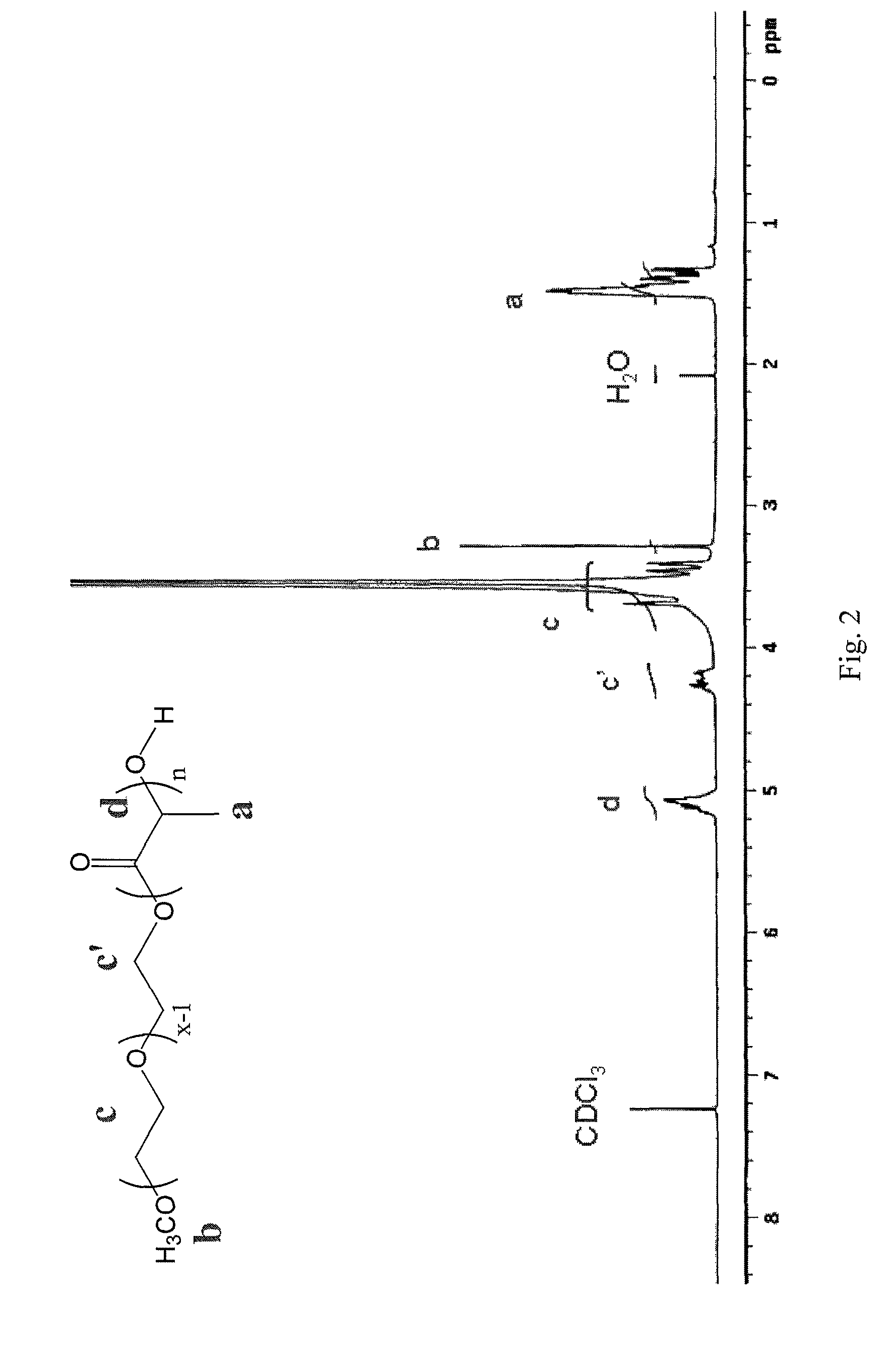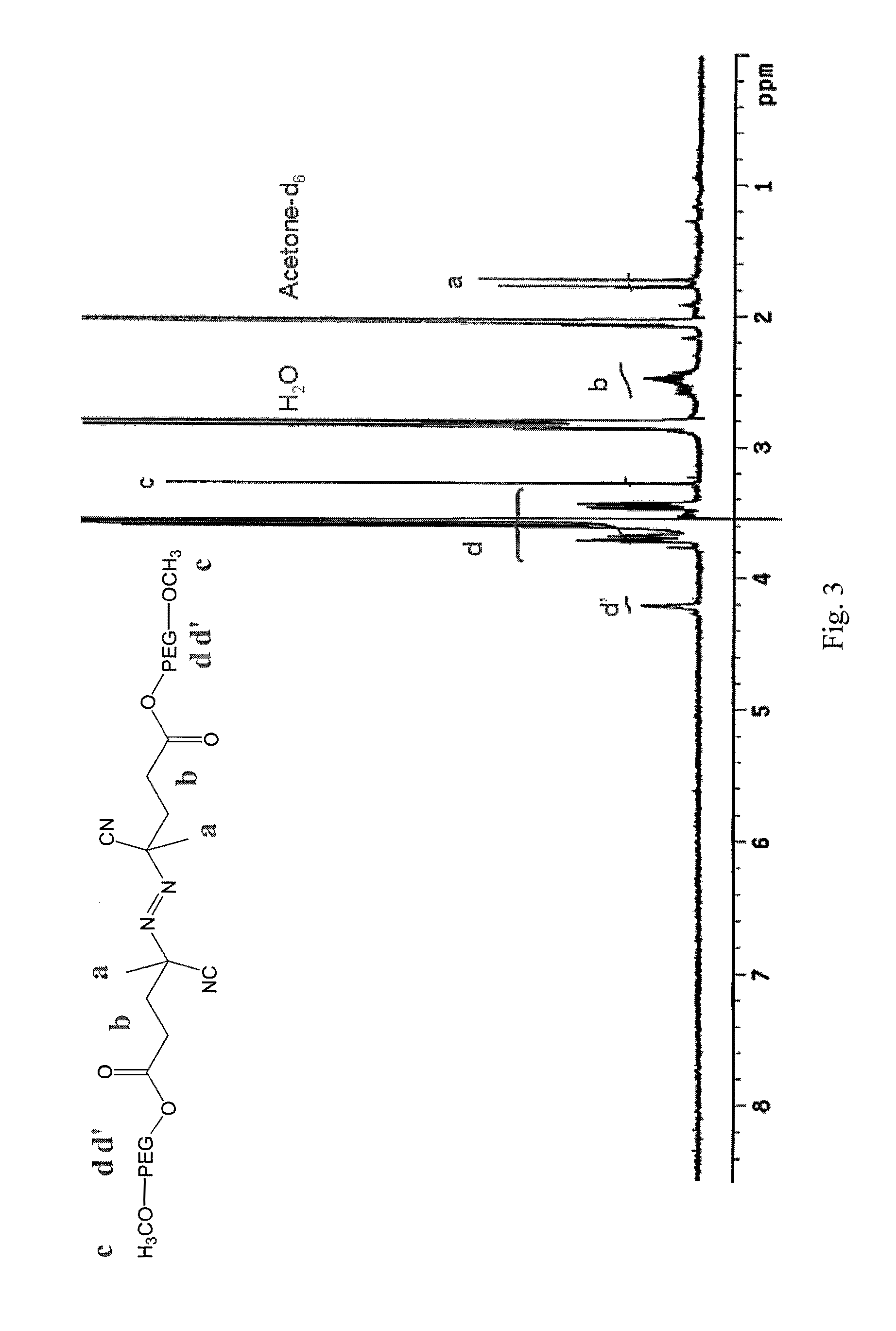Stable micelles formed with diblock copolymers of critical micelle concentration copolymer and temperature-sensitive copolymer
a copolymer and micelle technology, applied in the field of mixed micelles, can solve the problems of difficult control of the drug release mechanism of temperature-sensitive diblock copolymer-forming micelles, the micelle type cannot maintain its integral structure, and the study of temperature-sensitive copolymer for drug delivery in vivo is limited, so as to achieve the effect of small siz
- Summary
- Abstract
- Description
- Claims
- Application Information
AI Technical Summary
Benefits of technology
Problems solved by technology
Method used
Image
Examples
examples
Materials and Methods.
Synthesis of mPEG-b-PLA Diblock Copolymer.
[0051]mPEG-b-PLA diblock copolymer was synthesized by ring-opening polymerization. D,L-Lactide (1 g), mPEG (Mw=5000 Da) (10 g) and toluene (4 mL) were added to a two-necked round-bottle flask with a magnetic stirring bar. The mixture was heated in an oil bath and stirred at 130° C. under nitrogen. Stannous octoate (1 wt %) was then added to start the polymerization, which was continued for 16 h at 130° C. After polymerization, the product was terminated by adding 0.1 N methanolic KOH and recrystallizing from dichloromethane and diethyl ether cosolvent at −20° C. mPEG-b-PLA ([EG]:[LA]=113:7 mol / mol) was thus obtained.
[0052]The chemical structure of mPEG-b-PLA was characterized by 1H-NMR (AMX-500, Bruker), which is shown in FIG. 2. Additionally, the polydispersity index (PI) was 1.2 from GPC determination. The number average molecular weight of mPEG is 5 kg / mol, and is 1.75 kg / mol for PLA.
Synthesis of mPEG2-ABCPA Macroini...
PUM
| Property | Measurement | Unit |
|---|---|---|
| LCST | aaaaa | aaaaa |
| critical concentration temperature | aaaaa | aaaaa |
| particle sizes | aaaaa | aaaaa |
Abstract
Description
Claims
Application Information
 Login to View More
Login to View More - R&D
- Intellectual Property
- Life Sciences
- Materials
- Tech Scout
- Unparalleled Data Quality
- Higher Quality Content
- 60% Fewer Hallucinations
Browse by: Latest US Patents, China's latest patents, Technical Efficacy Thesaurus, Application Domain, Technology Topic, Popular Technical Reports.
© 2025 PatSnap. All rights reserved.Legal|Privacy policy|Modern Slavery Act Transparency Statement|Sitemap|About US| Contact US: help@patsnap.com



